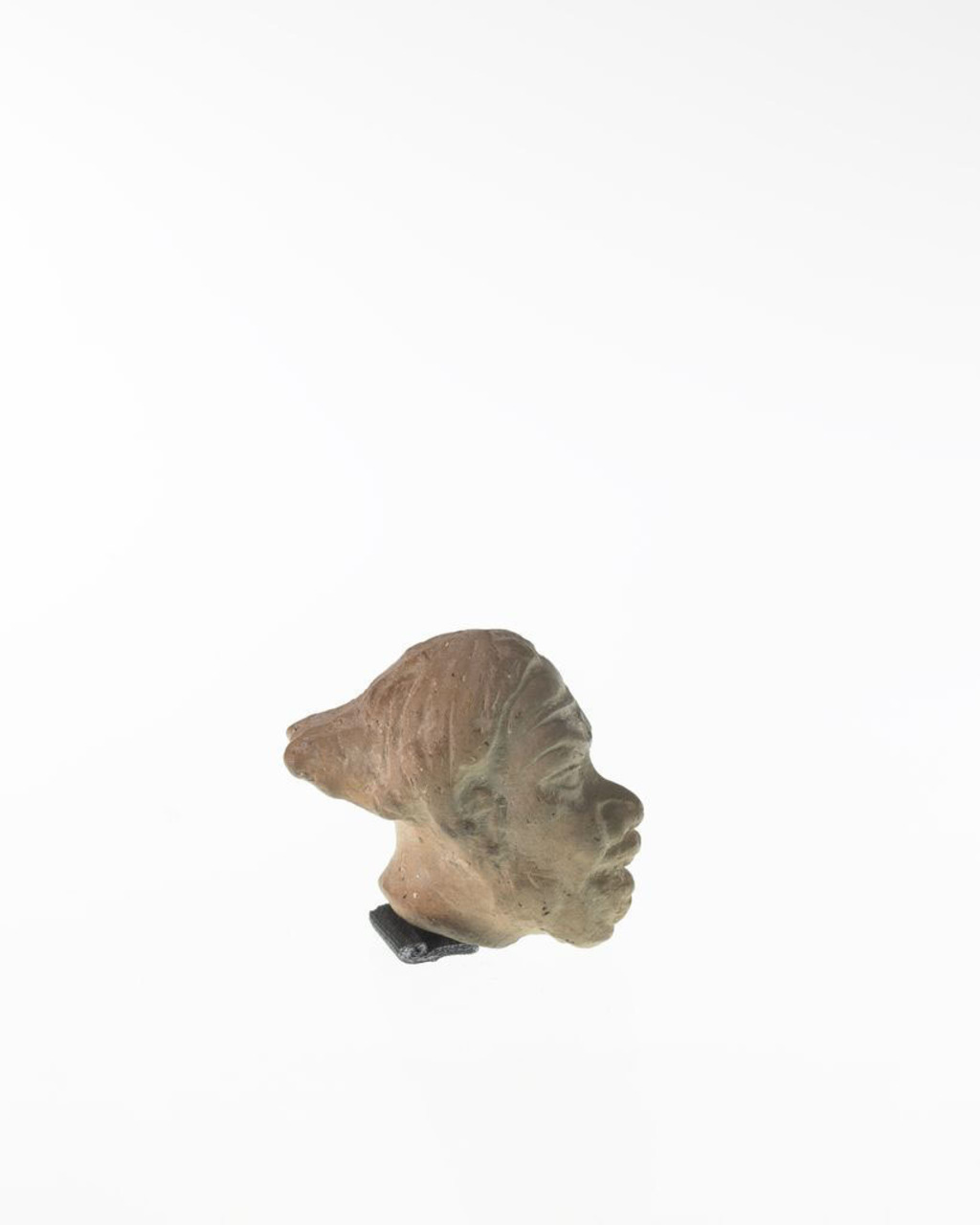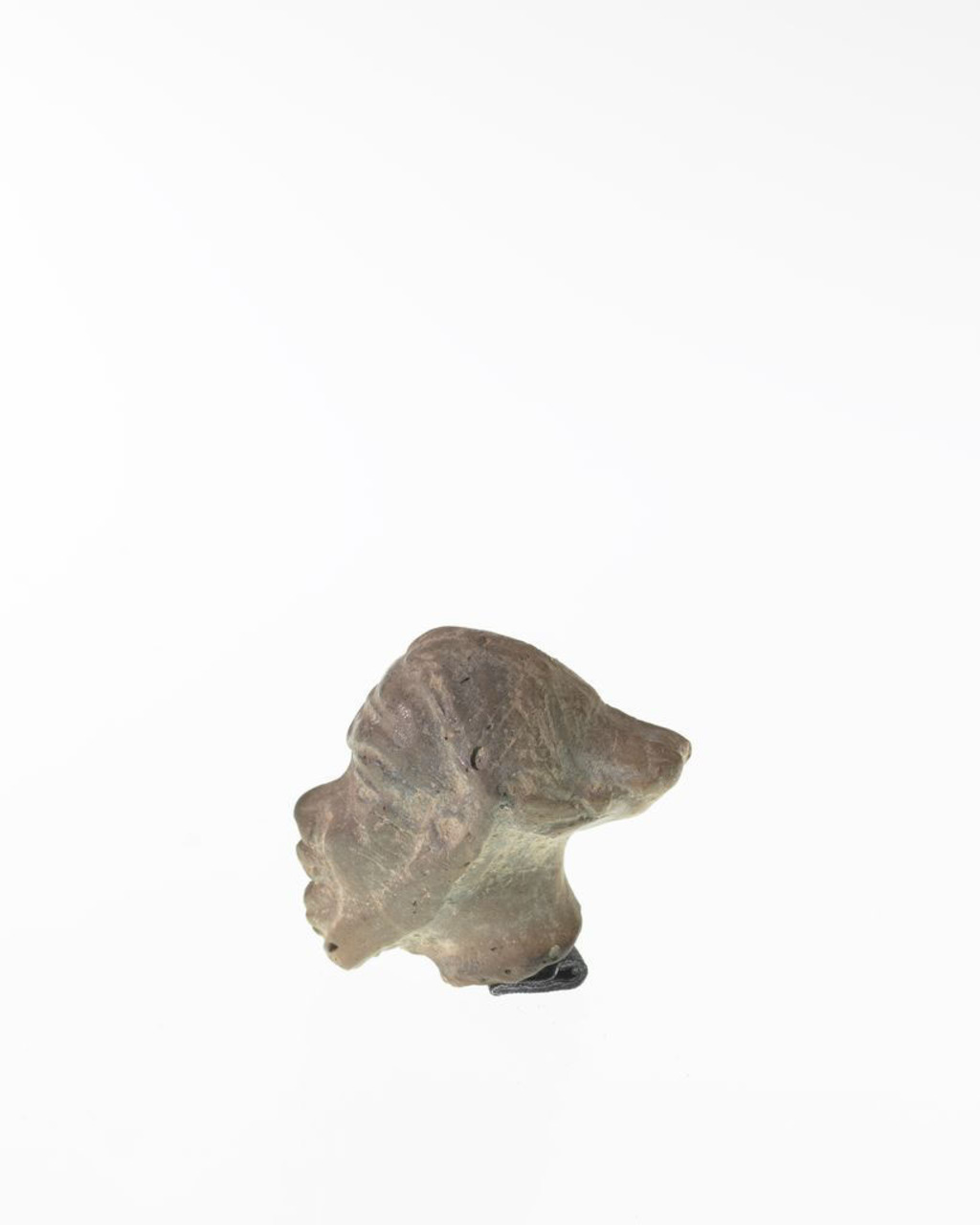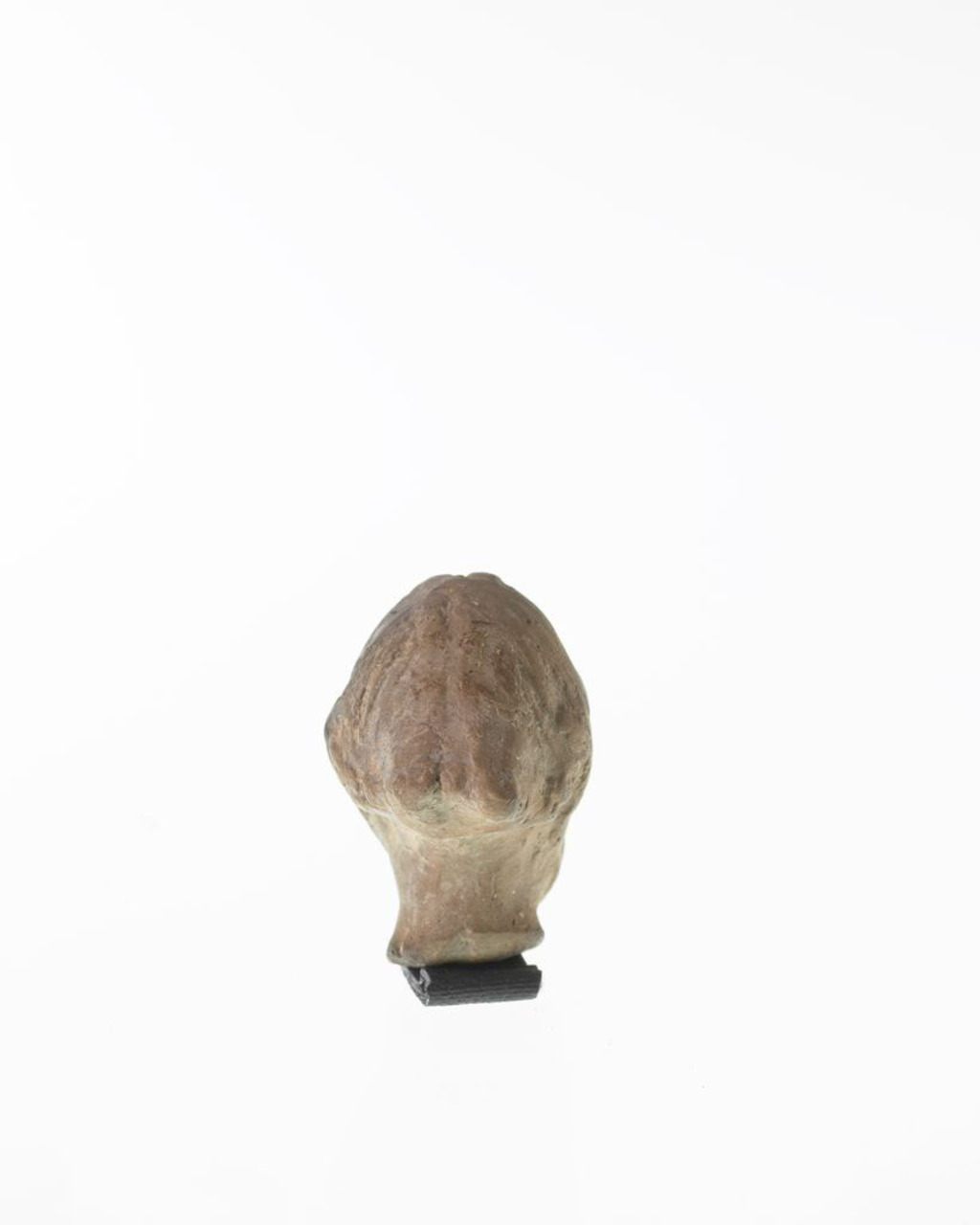This terracotta head portrays the long, lean face of a mature Black African man with short hair and a beard, wearing a slouching cap (sometimes referred to as a snood). His facial features, such as the protruding chin and large ears, are exaggerated, possibly to represent a theatrical character. Heavy lines indicate a furrowed brow with dramatically arched eyebrows. The figure is broken at the neck, but it likely once belonged to a statuette. Like other Egyptian terracottas produced in the Hellenistic or Roman periods (323 BCE–476 CE), it may have had a white coating with details added in paint. The exact purpose of the figure is unknown, but it possibly functioned as a small charm or ex-voto (a small religious offering) for a domestic altar.
This fragmentary head is said to be from the collection of Dr. Daniel Fouquet (1850–1914). Dr. Fouquet was a French doctor living and working in Cairo, who was fascinated with ancient Egyptian history and even assisted with some studies of mummies. He primarily collected materials purchased in Cairo that came from the Nile Delta area. A number of objects in the Menil Collection were purchased at the same time as this head and are from his collection, confirmed by their appearance in a partial catalogue from 1921. This particular terracotta does not appear in that publication, so we cannot prove it once belonged to Dr. Fouquet. The catalogue, however, did not publish every terracotta in the collection, only the approximately 600 pieces that the author, a French scholar named Paul Perdrizet, found most interesting.







